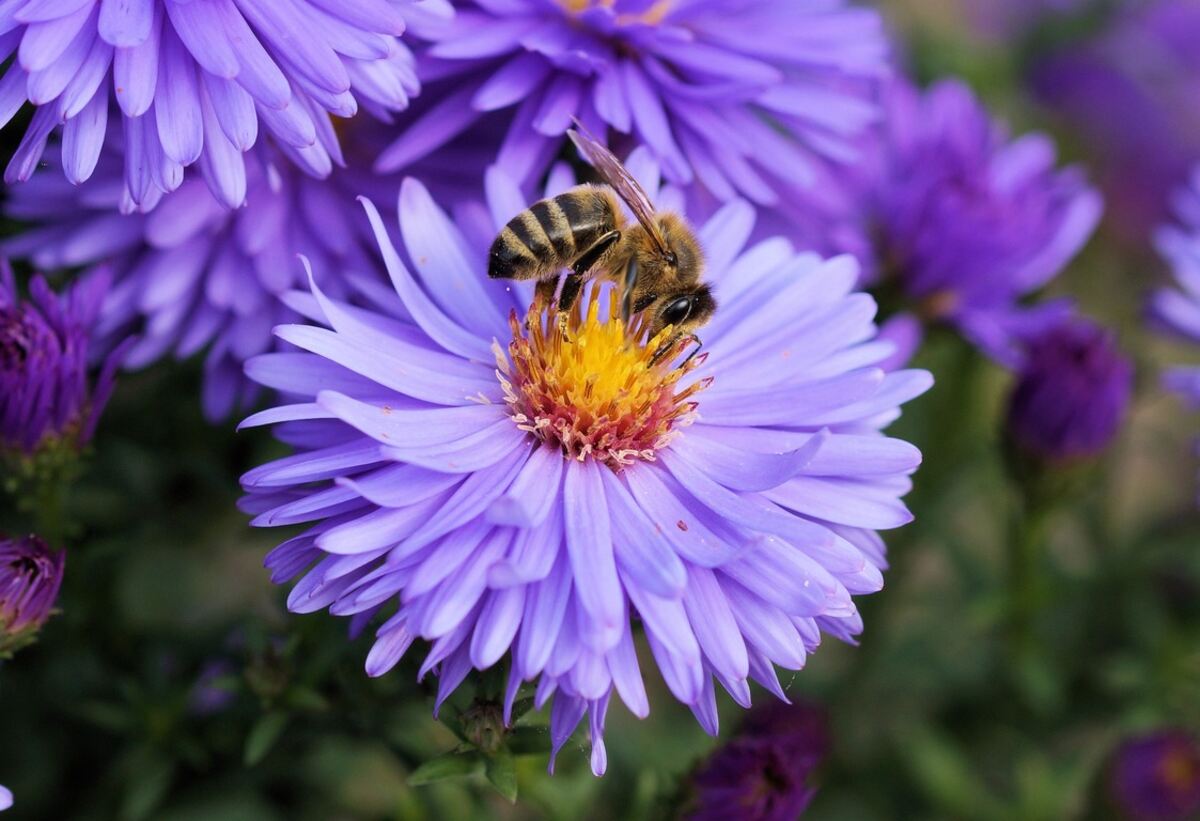
The rumbling drone of a bumblebee or the sight of a sweat bee landing on your picnic basket might send you scurrying back inside. But these tiny fliers are first responders in food security, and we must protect them. Here’s how to build a bee lawn to provide nectar and pollen for honeybees and other beneficial insects.
Who Benefits from Bee Lawns?
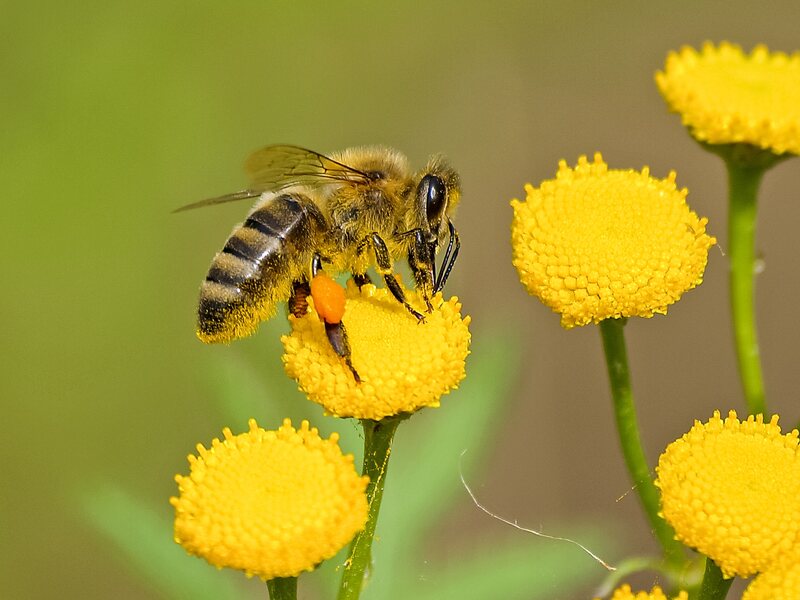
Everyone! Our food crops, such as tree fruits, pumpkins, and countless others, depend on wild bees and other pollinators. Wild bees, especially bumblebees, are essential to blueberry pollination. They release pollen from the flowers using the “buzz pollination” technique.
The problem: Farmland development has become a problem for over 4,000 known species of bee pollinators in the United States. Bee habitats — grasslands, meadows, and woodlands — have been replaced with tilled farm furrows.
The solution: You! You can help restore habitats for these essential pollinators by planting a bee-friendly lawn.
What is a Bee Lawn?
These untraditional lawns are not the manicured spreads of a single species of grass, with interlopers plucked out. Instead, they attract bees by giving them what they like. These flowering lawns embrace a blend of wildflowers and even plants others consider weeds, such as clover and dandelions.
When to Plant a Bee Lawn
When you plant is determined by what you plant. Although bees are attracted to a wide range of vegetation, only a few are suitable for lawns. The essential elements for a bee lawn are bee-friendly grass and low-growing, blooming plants that can survive foot traffic and add color to your lawn.
Turfgrasses
The main grass types used on a bee lawn are cool-season grasses, which do well if seeded in the fall.
- Fescues: Lawns overseeded with these grasses are low-maintenance, and adding pollinator-friendly plants improves their tolerance to heavy foot traffic. Fine fescue is the best option but all the fescues are bee-lawn-friendly.
- Kentucky bluegrass: Kentucky bluegrass is a good option because of its growth habit and compatibility with bee lawn flowers. However, it requires more fertilizer and water than fine fescue.
- Other grasses: Other turf grasses aren’t as well suited for a bee lawn, but you could always substitute that turf with native grasses for an even more eco-friendly lawn.
Plants
Flowering plants are best if seeded into your lawn in the spring.
- Violets (Viola sororia): In addition to being beautiful bee havens, these early purple blossoms and wide leaves form a canopy that blocks rival plants from growing in your yard. Their broadleaf habit makes them excellent companion plants in a traditional lawn because they help shade out weeds.
- Dutch white clover (Trifolium repens): Before the 1950s, clover was common in the United States. With a clover lawn, you may save time, money, and water while providing pollinator habitat.
- Self-heal (Prunella vulgaris): A member of the mint family, it is native to almost every state, including Alaska, and is a favorite among pollinators.
Why Build a Bee Lawn?
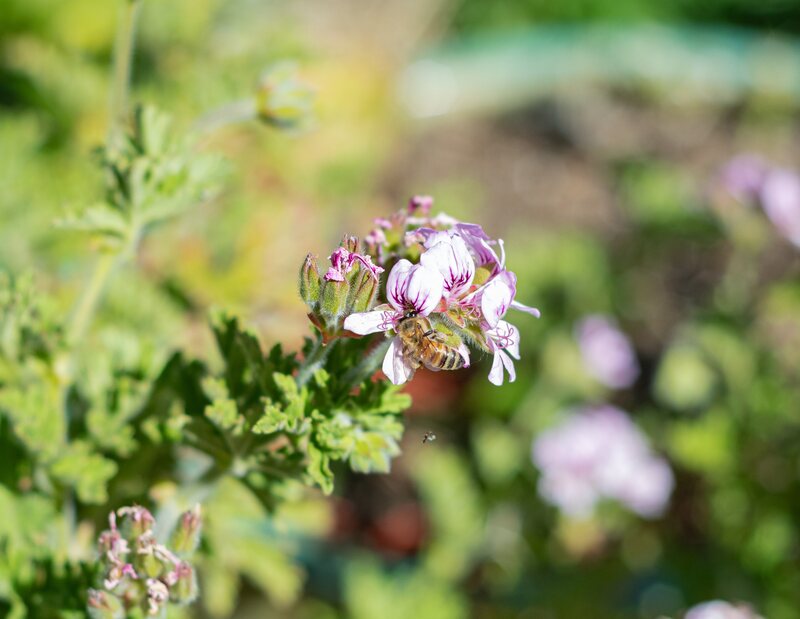
Turf lawns usually function as a grass monoculture (single species in the same location). Flowering plants such as the dandelion or clover are seen as a nuisance in such lawns. But flowers within a polyculture lawn, like clover and bee lawns, have been shown to support at least 66 species, including 55 bee species on Dutch white clover alone.
Bee lawns add diversity to the property’s landscape, and as a result, they need less maintenance. Reducing the need for irrigation, fertilizer, and mowing can save homeowners and land managers money. Turfgrass blended with low-growing perennials that bloom after mowing is a foraging delight to local bee populations.
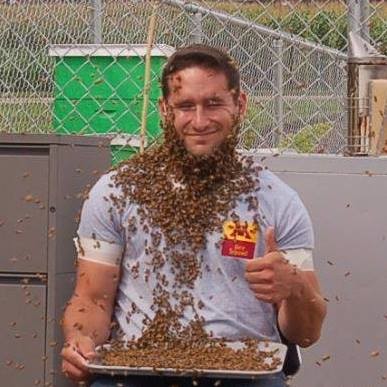
How to Build a Bee-Friendly Lawn
The overall goal of a bee lawn: Instead of using one type of grass, use a seed mix with several different types of grass and low-growing perennials that bloom at other times of the year.
Native plants and more-diverse landscapes also contribute to a healthy bee population. Aerate and overseed lawns with bee-friendly fescues, clovers, creeping thyme, or self heal.
“Use fine fescue (Festuca brevipila) grasses, which require less water, fertilizer, and mowing than conventional Kentucky bluegrass lawns,” says James Wolfin, a graduate research assistant working on the University of Minnesota’s bee lawn project.
Location
Many wild bees nest in the ground and prefer undisturbed areas with loose, un-mulched soil.
- Low traffic areas around your home, like a side yard or a portion of your lawn that doesn’t have much foot traffic.
- Hard-to-mow areas, when reseeded, save your time and your back. This is ideal for embankments, sloping yards, or unused areas.
- Along sidewalks and driveways to keep the spreading nature of your bee lawn from creeping over to the neighbors’. Even spaces between patio or stepping stones look great when seeded with low-growing bloomers such as lilyturf, clover, or sweet alyssum.
Soil
The versatility of bee lawns means there are many plants to choose from. Select from the many plants that will work in your soil so they’ll grow well and make the bees happy. Testing your soil first will tell you what plants will thrive in your yard.
- Get a soil test to know what works in your soil and if amendments are needed. You can get a soil test from your local Extension office.
- Native plants and more diverse landscapes can also contribute to a healthy bee population. Plus, native grasses are adapted to your current soil conditions.
- Compacted areas restrict growth and need aerating before overseeding to loosen the soil. If turfgrass won’t grow there, neither will the rest of your bee lawn.
Sunlight
Bee lawns, like most plants, need the sun to grow. How much sun you need is determined by what you decide to grow.
- Sunny areas: Kentucky bluegrass and violets will bring color to your yard.
- Shaded areas: Fine fescue and self-heal will thrive in hard-to-grow spaces.
- Partial-shade: Tall fescue and white clover can span the gap.
Maintenance
Bee-friendly lawns don’t require any more maintenance than regular lawns, and they may require less, depending on how often you mow. Either way, you’ll have more insect life in your lawn.
- Fertilizing: Use organic fertilizers and lawn care techniques, and stay away from chemical fertilizers and herbicides — remember, natural growth is best.
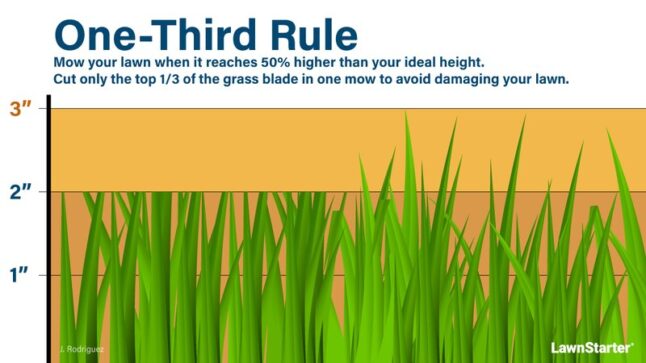
- Fertilizing: Use organic fertilizers and lawn care techniques, and stay away from chemical fertilizers and herbicides — remember, natural growth is best.
- Mowing: Let the grass grow to 4 inches or more to encourage blooming. When you do mow, use the one-third rule to avoid cutting too short. Longer grass prevents moisture evaporation and encourages healthy growth.
If you find it difficult to walk in the taller grass, mow paths in higher traffic areas, or leave taller areas of grass mixtures at the edge of your manicured lawn areas.
- Watering: New seeds and plants always need extra water to establish, but once growing, most bee lawns are drought tolerant when you use proper watering techniques.
To entice pollinators to visit your bee lawn, add watering spots. For example, put clean water and river stones in plain terra cotta saucers. Bees can easily fall into deep water and drown, so make sure the stones rise above the surface of the water.
Bee Friendliness Around Your Yard
| Bee-Friendly Plants by Region | |
|---|---|
| To find plants that attract wild bees and other pollinators, and thrive in your region, see the lists below. | |
| Arizona | Massachusetts |
| California | Minnesota |
| Florida | Nevada/Utah mountains |
| Georgia | New York |
| Illinois | Ohio |
| Louisiana | Oklahoma |
| Maryland | Texas |
Soon, the rumble of a bumble will be music to your ears, knowing that you are supporting the health of an essential part of our ecosystem.
The concept is catching on. In Minnesota, for example, state lawmakers have approved $900,000 to help homeowners cover the costs of planting bee lawns. The program began in 2019 and is ongoing as of this writing.
The Importance of Wild, Native Bees
Wild bees are different from the cultivated colonies of honeybees, a non-native type of bee kept in beehives and tended by beekeepers as commercial pollinators. There are about 4,000 species of native bees, and they do a better job of pollinating some plants and crops than honeybees do.
That loss of high-quality forage and habitat, as well as increased exposure to pests, diseases, and pesticides, all contribute to the reduction in wild bee numbers, explains James Wolfin. “A recent study in Illinois found that, over a 120-year period up to 2010, half of the wild bee species in the state went extinct.”
Types of Bees
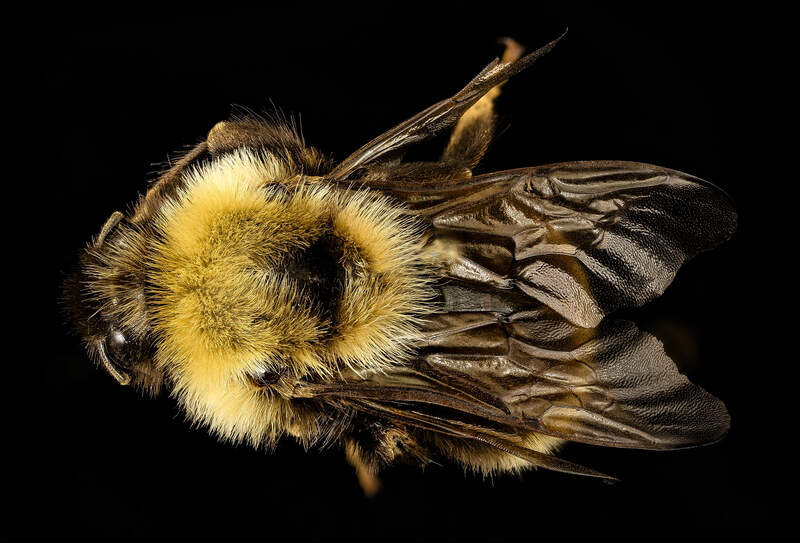
Photo Credit: USGS / Flickr / Public Domain
That bumblebee and honeybee you are familiar with are just two members of an extensive bee family. Sweat bees, carpenter bees, mason bees, leafcutter bees, and many other species are vital to pollination, too.
“Some bees are generalists that pollinate a variety of plants. Others are specialists, pollinating a small number of plant species,” says Wolfin.
- Rusty patched bumble bee (Bombus affinis): White blooms, such as those of Dutch White Clover, are a favorite of this endangered species.
- Sweat bee (Auguchlora pura): It’s known that this tiny bee is a generalist pollinator and collects pollen from more than 20 different flowering plant groups.
- Blue Orchard Mason Bee (Osmia lignaria): The Blue Orchard Mason Bee, one of the few native pollinators maintained in agriculture, is treasured for its ability to pollinate fruit trees.
FAQ: Bee Lawn Questions
No. The majority of bee species build their nests underground. Orchard bee varieties bore tunnels in trees, use existing gaps, or use tunnels made by wood-boring insects.
“No Mow May” is a preservation initiative that encourages people to leave their lawns uncut for the entire month of May. This provides early pollinators, like bees, with both habitat and food.
Honeybee and native bee population numbers have been declining over the past few decades due to a lack of natural habitat, food sources, and excessive use of pesticides, insecticides, and fertilizers.
When to Call a Pro
Do you want to try a bee lawn? Owning your own property has several advantages, including the freedom to experiment whenever you feel like it. But it takes a lot of time. Occasionally, you prefer to unwind rather than take care of yard work during your free time.
Local landscaping pros will handle the work, allowing you to relax and enjoy your yard. Local, skilled, and highly rated professionals can give you the lawn you want at a price you can afford. A free, quick, and simple quote is only a click or phone call away.
Main Image Credit: Pxhere